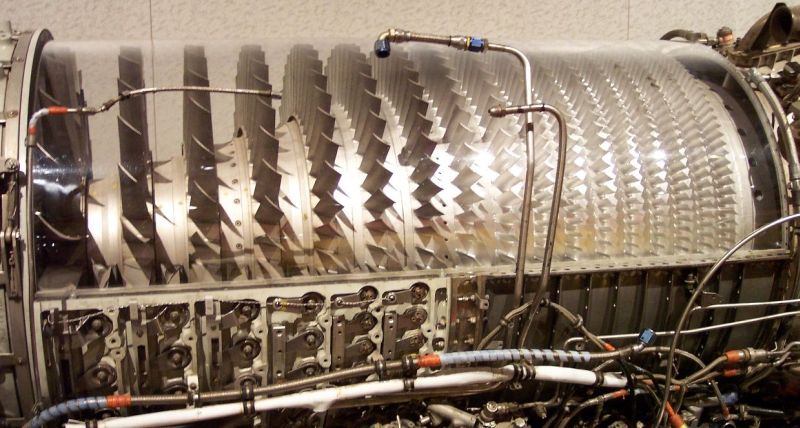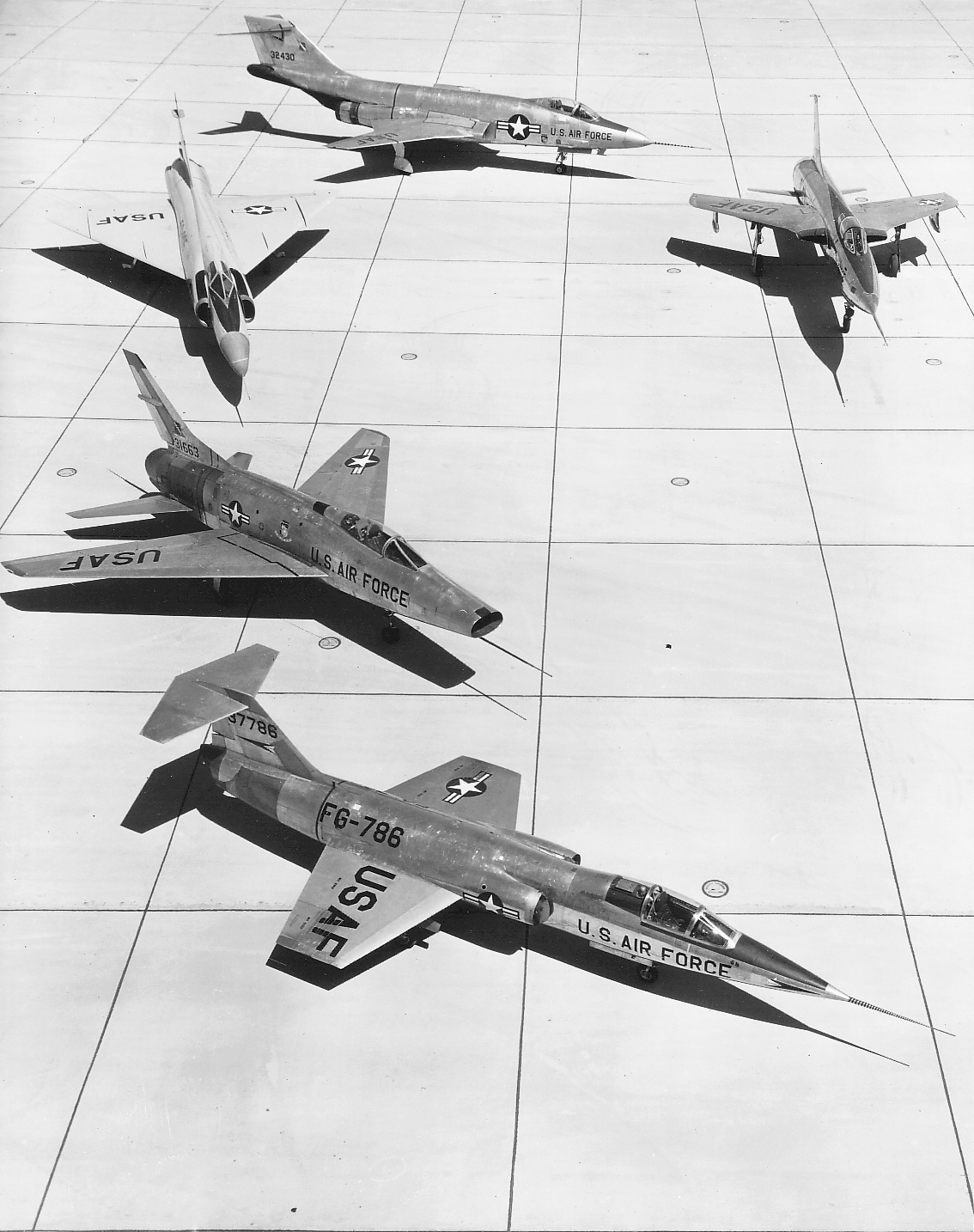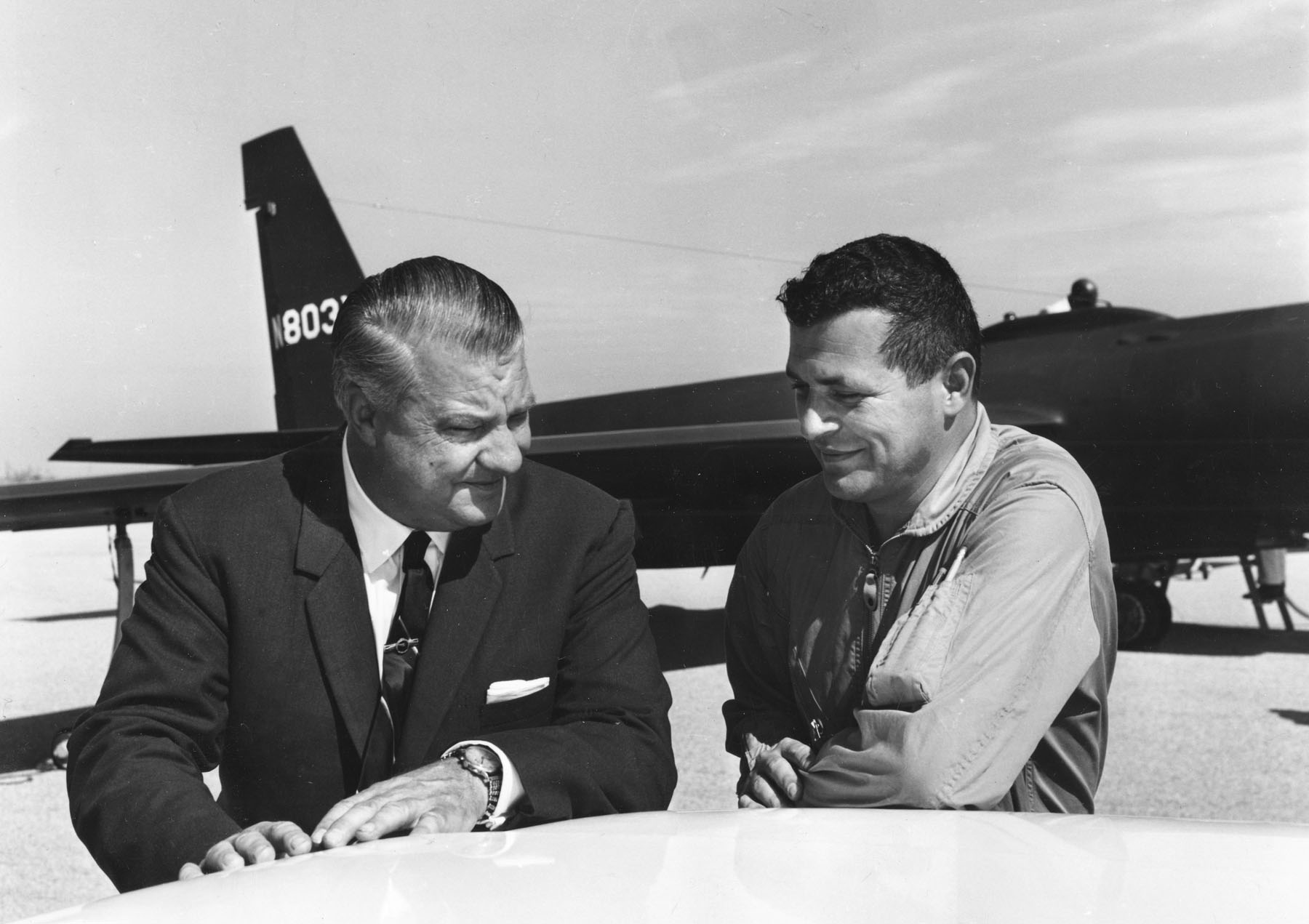|
F-104
The Lockheed F-104 Starfighter is an American single-engine, supersonic Interceptor aircraft, interceptor. Created as a day fighter by Lockheed Corporation, Lockheed as one of the "Century Series" of fighter aircraft for the United States Air Force (USAF), it was developed into an all-weather Multirole combat aircraft, multirole aircraft in the early 1960s and extensively deployed as a fighter-bomber during the Cold War. It was also produced under license by other nations and saw widespread service outside the United States. After interviews with Korean War fighter pilots in 1951, Lockheed lead designer Kelly Johnson (engineer), Kelly Johnson chose to buck the trend of ever-larger and more complex fighters to produce a simple, lightweight aircraft with maximum altitude and climb performance. On 4 March 1954, the Lockheed XF-104 took to the skies for the first time, and on 26 February 1958, the production fighter was activated by the USAF. Just a few months later, it was presse ... [...More Info...] [...Related Items...] OR: [Wikipedia] [Google] [Baidu] [Amazon] |
Canadair CF-104 Starfighter
The Canadair CF-104 Starfighter (CF-111, CL-90) is a modified version of the Lockheed F-104 Starfighter supersonic fighter aircraft built in Canada by Canadair under licence. It was primarily used as a ground attack aircraft, despite being designed as an interceptor. It served with the Royal Canadian Air Force (RCAF) and later the Canadian Armed Forces (CAF) until it was replaced by the McDonnell Douglas CF-18 Hornet in 1987. Design and development In the late 1950s, Canada redefined its role in the North Atlantic Treaty Organization (NATO) with a commitment to a nuclear weapon, nuclear strike mission. At the same time, the RCAF began to consider a replacement for the Canadair Sabre, Canadair F-86 Sabre series that had been utilized as a NATO day fighter.Bashow 1990, p. 8. An international fighter competition involved current types in service as well as development, including the Blackburn Buccaneer, Dassault Mirage III, Dassault Mirage IIIC, Fiat G.91, Grumman F11F-1F Super Ti ... [...More Info...] [...Related Items...] OR: [Wikipedia] [Google] [Baidu] [Amazon] |
Aeritalia F-104S Starfighter
The Aeritalia F-104S Starfighter was a licensed production Italian version of the Lockheed F-104 Starfighter, which served in the Italian Air Force, and was its mainstay from the late 1960s until the beginning of the 21st century. The F-104S also served in the Turkish Air Force until the mid-1990s. The F-104S was the final development of the Starfighter line. Derived from Lockheed's design studies on a "Super Starfighter", the F-104S was one of the most capable of the F-104 series, and destined to be the last in service worldwide. The F-104S (upgraded to ASA/M standard) was retired from service in October 2004. Design and development The F-104 series had entered a second development phase with the F-104G (for Germany, lead country for this version). While the USAF had no more interest in the F-104, Lockheed proposed the Model CL-901 featuring the new J79-GE-19 engine and the improved Sparrow III.Niccoli 2005, p. 4. Further proposed developments included the CL-958 with large ... [...More Info...] [...Related Items...] OR: [Wikipedia] [Google] [Baidu] [Amazon] |
Lockheed XF-104 Starfighter
The Lockheed XF-104 Starfighter was a single-engine, high-performance, supersonic interceptor aircraft, interceptor prototype for a United States Air Force (USAF) series of lightweight and simple fighters. Only two aircraft were built; one aircraft was used primarily for aerodynamic research and the other served as an armament testbed, both aircraft being destroyed in accidents during testing.Bowman 2000, p. 33. The XF-104s were forerunners of over 2,500 production Lockheed F-104 Starfighters. During the Korean War, USAF fighter pilots were outclassed by MiG-equipped Soviet pilots. Lockheed engineers, led by Kelly Johnson (engineer), Kelly Johnson, designed and submitted a novel design to the Air Force, notable for its sleekness, particularly its thin wings and missile-shaped fuselage, as well as a novel pilot ejection system. Flight testing of the XF-104s began with the first flight in March 1954, encountering several problems, some of which were resolved; however, performance ... [...More Info...] [...Related Items...] OR: [Wikipedia] [Google] [Baidu] [Amazon] |
Lockheed NF-104A
The Lockheed NF-104A is an American mixed-power, high-performance, supersonic aerospace trainer that served as a low-cost astronaut training vehicle for the North American X-15 and projected Boeing X-20 Dyna-Soar programs. Three aircraft were modified from existing Lockheed F-104A Starfighter airframes, and served with the Aerospace Research Pilots School between 1963 and 1971, the modifications included a small supplementary rocket engine and a reaction control system for flight in the stratosphere. During the test program, the maximum altitude reached was more than . One of the aircraft was destroyed in an accident while being flown by Chuck Yeager. The accident was depicted in the book '' The Right Stuff'' and the film of the same name. On December 10, 2019, Edwards Air Force Base released the complete video transcription of films of the 1963 flight and subsequent crash. Development With the advent of human spaceflight in the early 1960s, the United States Air Force (USA ... [...More Info...] [...Related Items...] OR: [Wikipedia] [Google] [Baidu] [Amazon] |
General Electric J79
The General Electric J79 is an axial-flow turbojet engine built for use in a variety of fighter and bomber aircraft and a supersonic cruise missile. The J79 was produced by General Electric Aircraft Engines in the United States, and under license by several other companies worldwide. Among its major uses was the Lockheed F-104 Starfighter, Convair B-58 Hustler, McDonnell Douglas F-4 Phantom II, North American A-5 Vigilante and IAI Kfir. A commercial version, designated the CJ805, powered the Convair 880, while an aft-turbofan derivative, the CJ805-23, powered the Convair 990 airliners and a single Sud Aviation Caravelle intended to demonstrate to the U.S. market the benefits of a bypass engine over the existing Rolls-Royce Avon turbojet. In 1959 the gas generator of the J79 was developed as a stationary 10 MW-class () free-turbine turboshaft engine for naval power, power generation, and industrial use, called the LM1500. Its first application was in the research hydr ... [...More Info...] [...Related Items...] OR: [Wikipedia] [Google] [Baidu] [Amazon] |
Lockheed CL-1200 Lancer
The Lockheed CL-1200 Lancer was a late 1960s company-funded proposal for a fighter aircraft based on the Lockheed F-104 Starfighter. The CL-1200 was conceived and marketed mainly for and to non-US military services, as an export product. As such it would have competed with combat-proven designs like the Dassault Mirage III, McDonnell Douglas F-4 Phantom II, Mikoyan-Gurevich MiG-21, and Northrop F-5, Northrop F-5E Tiger II. The CL-1200 competed unsuccessfully against proposed fourth generation fighter, fourth generation designs, under the US government's Lightweight Fighter program, which would eventually result in the General Dynamics F-16 and Northrop F-17 Cobra (precursor of the McDonnell Douglas F/A-18). Lockheed sought to capitalize on its F-104 production experience, and commonality of parts and systems. It could minimize expenses by reusing tooling, jigs and existing facilities. Lockheed was also experienced in consortium production and further hoped to continue this arrang ... [...More Info...] [...Related Items...] OR: [Wikipedia] [Google] [Baidu] [Amazon] |
Century Series
The Century Series is a popular name for a group of US fighter aircraft representing models designated between F-100 and F-106 which went into full production. They included the first successful supersonic aircraft designs in the United States Air Force's service, which remained in active service well into the 1970s and 1980s with the Air Force Reserve and Air National Guard. Three later variants, the QF-100, QF-102, and QF-106, also continued in service, primarily as aerial target drones, until the late 1990s. The F-104G stayed in service with the Italian military until 2004. The NASA airborne science program maintains a group of F-104G in airworthy condition for use as test platforms and chase aircraft. Century Series aircraft The name "Century Series" stems from the fighter (F-) designation number being in the 100–109 range. The term became popular to refer to a group of generally similar designs of the 1950s and early 1960s. As it evolved, the attribution of the Cent ... [...More Info...] [...Related Items...] OR: [Wikipedia] [Google] [Baidu] [Amazon] |
German Air Force
The German Air Force (, ) is the aerial warfare branch of the , the armed forces of Germany. The German Air Force (as part of the ) was founded in 1956 during the era of the Cold War as the aerial warfare branch of the armed forces of West Germany. After the reunification of West and East Germany in 1990, it integrated parts of the air force of the former German Democratic Republic, which itself had been founded in 1956 as part of the National People's Army. There is no organizational continuity between the current Luftwaffe of the Bundeswehr and the former Luftwaffe of the Wehrmacht founded in 1935, which was completely disbanded in 1945/46 after World War II. The term that is used for both the historic and the current German air force is the German-language generic designation of any air force. The commander of the German Air Force is Lieutenant General Ingo Gerhartz. As of 2015, the German Air Force uses eleven air bases, two of which host no flying units. Furthermore, ... [...More Info...] [...Related Items...] OR: [Wikipedia] [Google] [Baidu] [Amazon] |
Second Taiwan Strait Crisis
The Second Taiwan Strait Crisis, also known as the 1958 Taiwan Strait Crisis, was a conflict between the People's Republic of China (PRC) and the Taiwan, Republic of China (ROC). The PRC shelled the islands of Kinmen (Quemoy) and the Matsu Islands along the east coast of mainland China in an attempt to take them from Taiwan, governed by the Kuomintang (KMT), and to probe the extent of American commitment to defend the Republic of China. The conflict also involved air, naval, and amphibious operations. Then U.S. secretary of state Christian Herter reportedly described it as the "List of nuclear close calls, first serious nuclear crisis". Background The conflict was a continuation of the Chinese Civil War and First Taiwan Strait Crisis. The Taiwan, Republic of China (ROC) had begun to build military installations on the island of Kinmen (Quemoy) and the Matsu archipelago. The Chinese People's Liberation Army (PLA) began firing artillery at both Kinmen and some of the nearby M ... [...More Info...] [...Related Items...] OR: [Wikipedia] [Google] [Baidu] [Amazon] |
Kelly Johnson (engineer)
Clarence Leonard "Kelly" Johnson (February 27, 1910 – December 21, 1990) was an American aeronautical engineering, aeronautical and Systems engineering, systems engineer. He is recognized for his contributions to a series of important aircraft designs, most notably the Lockheed U-2 and Lockheed SR-71 Blackbird, SR-71 Blackbird. Besides the first production aircraft to exceed mach number, Mach 3, he also produced Lockheed F-104 Starfighter, the first fighter capable of Mach 2, Lockheed P-80 Shooting Star, the United States' first operational jet fighter, as well as Lockheed P-38 Lightning, the first fighter to exceed 400 mph, and many other contributions to various aircraft. As a member and first team leader of the Lockheed Corporation, Lockheed Skunk Works, Johnson worked for more than four decades and is said to have been an "organizing genius". He played a leading role in the design of over forty aircraft, including several honored with the prestigious Collier Trophy, ac ... [...More Info...] [...Related Items...] OR: [Wikipedia] [Google] [Baidu] [Amazon] |
Italian Air Force
The Italian Air Force (; AM, ) is the air force of the Italy, Italian Republic. The Italian Air Force was founded as an independent service arm on 28 March 1923 by Victor Emmanuel III of Italy, King Victor Emmanuel III as the ("Royal Air Force"). After World War II, when Italy became a republic following a referendum, the was given its current name. Since its formation, the service has held a prominent role in modern Military history of Italy, Italian military history. The acrobatic display team is the . History From 1923 until the end of WW2 the Italian Air Force was called Regia Aeronautica. The cockade of Italy is one of the symbols of the Italian Air Force, and is widely used on all Italian state aircraft, not only military. Early history and World War I Italy was among the earliest adopters of military aviation. Its air arm dates back to 1884, when the Italian Royal Army () was authorised to acquire its own air component. The Air Service () operated balloons based near R ... [...More Info...] [...Related Items...] OR: [Wikipedia] [Google] [Baidu] [Amazon] |
Lockheed Corporation
The Lockheed Corporation was an American aerospace manufacturer. Lockheed was founded in 1926 and merged in 1995 with Martin Marietta to form Lockheed Martin. Its founder, Allan Lockheed, had earlier founded the similarly named but otherwise-unrelated Loughead Aircraft Manufacturing Company, which was operational from 1912 to 1920. History Origins Allan Loughead and his brother Malcolm Loughead had operated an earlier aircraft company, Loughead Aircraft Manufacturing Company, which was operational from 1912 to 1920. The company built and operated aircraft for paying passengers on sightseeing tours in California and had developed a prototype for the civil market, but folded in 1920 due to the flood of surplus aircraft deflating the market after World War I. Allan went into the real estate market while Malcolm had meanwhile formed a successful company marketing brake systems for automobiles. On December 13, 1926, Allan Loughead, Jack Northrop, John Northrop, Kenneth Kay and Fre ... [...More Info...] [...Related Items...] OR: [Wikipedia] [Google] [Baidu] [Amazon] |







